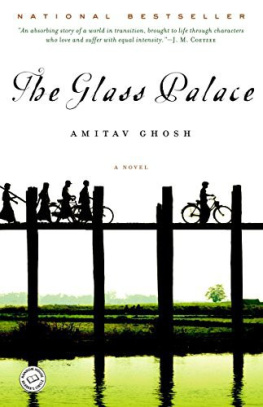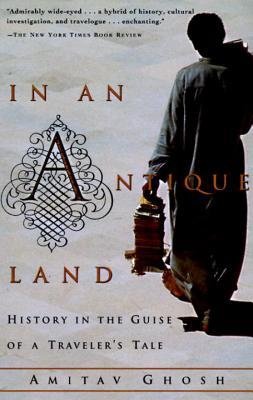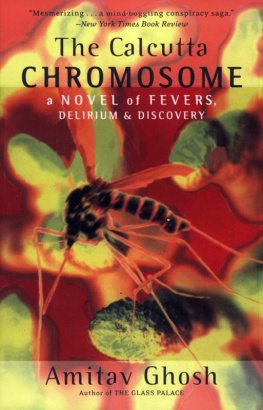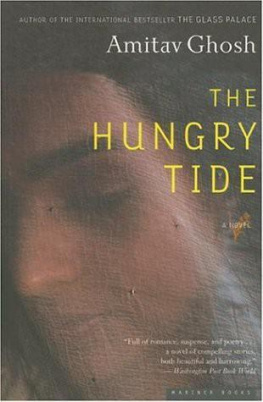Amitav Ghosh - River of Smoke
Here you can read online Amitav Ghosh - River of Smoke full text of the book (entire story) in english for free. Download pdf and epub, get meaning, cover and reviews about this ebook. genre: Adventure. Description of the work, (preface) as well as reviews are available. Best literature library LitArk.com created for fans of good reading and offers a wide selection of genres:
Romance novel
Science fiction
Adventure
Detective
Science
History
Home and family
Prose
Art
Politics
Computer
Non-fiction
Religion
Business
Children
Humor
Choose a favorite category and find really read worthwhile books. Enjoy immersion in the world of imagination, feel the emotions of the characters or learn something new for yourself, make an fascinating discovery.

- Book:River of Smoke
- Author:
- Genre:
- Rating:3 / 5
- Favourites:Add to favourites
- Your mark:
- 60
- 1
- 2
- 3
- 4
- 5
River of Smoke: summary, description and annotation
We offer to read an annotation, description, summary or preface (depends on what the author of the book "River of Smoke" wrote himself). If you haven't found the necessary information about the book — write in the comments, we will try to find it.
River of Smoke — read online for free the complete book (whole text) full work
Below is the text of the book, divided by pages. System saving the place of the last page read, allows you to conveniently read the book "River of Smoke" online for free, without having to search again every time where you left off. Put a bookmark, and you can go to the page where you finished reading at any time.
Font size:
Interval:
Bookmark:
River of Smoke
Amitav Ghosh
Part I
Islands
One
Deetis shrine was hidden in a cliff, in a far corner of Mauritius, where the islands eastern and southern shorelines collide to form the wind-whipped dome of the Morne Brabant. The site was a geological anomaly a cave within a spur of limestone, hollowed out by wind and water and there was nothing like it anywhere else on the mountain. Later Deeti would insist that it wasnt chance but destiny that led her to it for the very existence of the place was unimaginable until you had actually stepped inside it.
The Colver farm was across the bay and towards the end of Deetis life, when her knees were stiff with arthritis, the climb up to the shrine was too much for her to undertake on her own: she wasnt able to make the trip unless she was carried up in her special pus-pus a contraption that was part palki and part sedan chair. This meant that visits to the shrine had to be full-scale expeditions, requiring the attendance of a good number of the Colver menfolk, especially the younger and sturdier ones.
To assemble the whole clan La Fami Colver, as they said in Kreol was never easy since its members were widely scattered, within the island and abroad. But the one time of year when everyone could be counted on to make a special effort was in mid-summer, during the Gran Vakans that preceded the New Year. The Fami would begin mobilizing in mid-December, and by the start of the holidays the whole clan would be on the march; accompanied by paltans of bonoys, belsers, bowjis, salas, sakubays and other in-laws, the Colver phalanxes would converge on the farm in a giant pincer movement: some would come overland on ox-carts, from Curepipe and Quatre Borne, through the misted uplands; some would travel by boat, from Port Louis and Mahebourg, hugging the coast till they were in sight of the mist-veiled nipple of the Morne.
Much depended on the weather, for a trek up the wind-swept mountain could not be undertaken except on a fine day. When the conditions seemed propitious, the bandobast would start the night before. The feast that followed the puja was always the most eagerly awaited part of the pilgrimage and the preparations for it occasioned much excitement and anticipation: the tin-roofed bungalow would ring to the sound of choppers and chakkis, mortars and rolling-pins, as masalas were ground, chutneys tempered, and heaps of vegetables transformed into stuffings for parathas and daal-puris. After everything had been packed in tiffin-boxes and gardmanzes, everyone would be bundled off for an early night.
When daybreak came, Deeti would take it on herself to ensure that everyone was scrubbed and bathed, and that not a morsel of food passed anyones lips for as with all pilgrimages, this too had to be undertaken with a body that was undefiled, within and without. Always the first to rise, she would go tap-tapping around the wood-floored bungalow, cane in hand, trumpeting a reveille in the strange mixture of Bhojpuri and Kreol that had become her personal idiom of expression: Revey-te! E Banwari; e Mukhpyari! Revey-te na! Hagle ba?
By the time the whole tribe was up and on their feet, the sun would have set alight the clouds that veiled the peak of the Morne. Deeti would take her place in the lead, in a horse-drawn carriage, and the procession would go rumbling out of the farm, through the gates and down the hill, to the isthmus that connected the mountain to the rest of the island. This was as far as any vehicle could go, so here the party would descend. Deeti would take her seat in the pus-pus, and with the younger males taking turns at the poles, her chair would lead the way up, through the thick greenery that cloaked the mountains lower slopes.
Just before the last and steepest stretch of the climb there was a convenient clearing where everyone would stop, not just to catch their breath, but also to exclaim over the manifik view of jungle and mountain, contained between two sand-fringed, scalloped lines of coast.
Deeti alone was less than enchanted by this spectacular vista. Within a few minutes shed be snapping at everyone: Leve te! Were not here to goggle at the zoli-vi and spend the day doing patati-patata. Paditu! Chal!
To complain that your legs were fatige or your head was gidigidi was no use; all youd get in return was a ferocious: Bus to fana! Get on your feet!
It wouldnt take much to rouse the party; having come this far on empty stomachs, they would now be impatient for the post-puja meal, the children especially. Once again, Deetis pus-pus, with the sturdiest of the menfolk holding the poles, would take the lead: with a rattling of pebbles they would go up a steep pathway and circle around a ridge. And then all of a sudden, the other face of the mountain would come into view, dropping precipitously into the sea. Abruptly, the sound of pounding surf would well up from the edge of the cliff, ringing in their ears, and their faces would be whipped by the wind. This was the most hazardous leg of the journey, where the winds and updraughts were fiercest. No lingering was permitted here, no pause to take in the spectacle of the encircling horizon, spinning between sea and sky like a twirling hoop. Procrastinators would feel the sting of Deetis cane: Garatwa! Keep moving
A few more steps and theyd reach the sheltered ledge of rock that formed the shrines threshold. This curious natural formation was known to the family as the Chowkey, and it could not have been better designed had it been planned by an architect: its floor was broad and almost flat, and it was sheltered by a rocky overhang that served as a ceiling. It had something of the feel of a shaded veranda, and as if to complete the illusion, there was even a balustrade of sorts, formed by the gnarled greenery that clung to the edges of the ledge. But to look over the side, at the surf churning at the foot of the cliff, took a strong stomach and a steady head: the breakers below had travelled all the way up from Antarctica and even on a calm, clear day the water seemed to surge as though it were impatient to sweep away the insolent speck of land that had interrupted its northward flow.
Yet such was the miracle of the Chowkeys accidental design that visitors had only to sit down for the waves to disappear from view for the same gnarled greenery that protected the shelf served also to hide the ocean from those who were seated on the floor. This rocky veranda was, in other words, the perfect place to foregather, and cousins visiting from abroad were often misled into thinking that it was this quality that had earned the Chowkey its name for was it not a bit of a chowk, where people could assemble? And wasnt it something of a chokey too, with its enclosing sides? But only a Hindi-speaking etranzer would think in that vein: any islander would know that in Kreol the word chowkey refers also to the flat disc on which rotis are rolled (the thing that is known Back There as a chakki). And there it was, Deetis Chowkey, right in the middle of the rock shelf, crafted not by human hands but by the wind and the earth: it was nothing but a huge boulder that had been worn and weathered into a flat-topped toadstool of stone. Within moments of the partys arrival, the women would be hard at work on it, rolling out tissue-thin daal-puris and parathas and stuffing them with the delectable fillings that had been prepared the night before: finely ground mixes of the islands most toothsome vegetables purple arwi and green mouroungue, cambare-beti and wilted songe.
Several photographs from this period of Deetis life have survived, including a couple of beautiful silver-gelatin daguerrotypes. In one of them, taken in the Chowkey, Deeti is in the foreground, still seated in her pus-pus, the feet of which are resting on the floor. She is wearing a sari, but unlike the other women in the frame, she has allowed the ghungta to drop from her head, baring her hair, which is a startling shade of white. Her saris anchal hangs over her shoulder, weighted with a massive bunch of keys, the symbol of her continuing mastery of the Famis affairs. Her face is dark and round, lined with deep cracks: the daguerrotype is detailed enough to give the viewer the illusion of being able to feel the texture of her skin, which is that of crumpled, tough, weatherworn leather. Her hands are folded calmly in her lap, but there is nothing reposeful about the tilt of her body: her lips are pursed tightly together and she is squinting fiercely at the camera. One of her eyes, dimmed by cataracts, reflects the light blankly back to the lens, but the gaze of the other is sharp and piercing, the colour of the pupil a distinctive grey.
Font size:
Interval:
Bookmark:
Similar books «River of Smoke»
Look at similar books to River of Smoke. We have selected literature similar in name and meaning in the hope of providing readers with more options to find new, interesting, not yet read works.
Discussion, reviews of the book River of Smoke and just readers' own opinions. Leave your comments, write what you think about the work, its meaning or the main characters. Specify what exactly you liked and what you didn't like, and why you think so.










